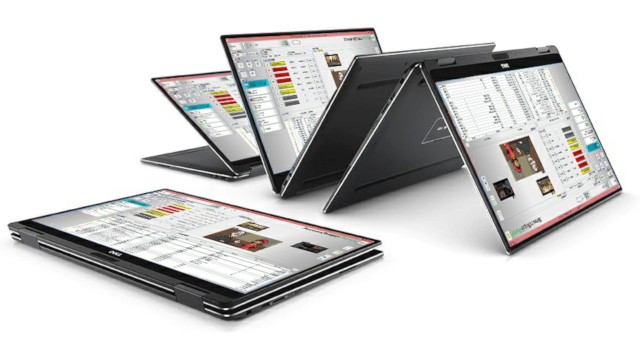IP, ATSC 3.0 Now Mainstream Test Subjects
ALEXANDRIA, Va. — Rapid acceptance of IP video is driving many changes to traditional test and measurement equipment. There will always be the need for familiar quality control devices like waveform monitors and vectorscopes, but studios and content creators today also need the ability to examine the data they generate — and that data is increasingly distributed at blindingly fast speeds.
Couple that with the LCD/LED and microprocessor revolutions, and a lot of today’s test gear looks nothing like what was used 20 or 30 years ago. As dedicated video distribution facilities (think SDI) are replaced by IP networks, test gear manufacturers are sprinting to keep up with the new measurement realities — often coming up with innovations in the size, capabilities and performance of the latest test and measurement products.

“The test requirements for SDI systems are relatively well known and documented,” said Ian Valentine, business director for the video product line for Beaverton, Ore.-based Tektronix. “However, as the industry transitions to IP-based technologies, a whole series of new measurements is required to understand what is happening on the network during the transmission of packets containing video, audio and metadata. This includes packet loss, packet jitter, RTP sequence errors, and packet timestamp delay factors to mention a few.”
IP VIDEO TRANSPORT STANDARD
The recently developed SMPTE 2110 standard for IP transmission of professional video, audio and data is a big reason why there is a need for IP test gear in a television environment.
“There are a whole series of measurements around the timing of video, audio and data against PTP [precision time protocol] to keep the network synchronized,” Valentine said. “Timing is particularly important when dealing with the SMPTE 2110 standard where the video, audio and data essence is all sent in separate streams. Being able to test the integrity of the separate data paths is essential to ensuring that transmission reliability is maintained.”
With 12G-SDI and the latest high-speed Ethernet networks, even the most mundane basics have to be reconsidered. Take, for example, the BNC connector.
“As the industry transitions to IP-based technologies, a whole series of new measurements is required.” —Ian Valentine, Tektronix
“The BNC connector that the industry has used for more than 50 years is a spring-loaded bayonet — and using the real-time eye capabilities of the Phabrix Qx, you can see that this technology is right on the limit simply by touching and waggling the BNC connector and cable,” said Prinyar Boon, product manager for U.K.-based Phabrix. “Around 10mV signal amplitude variation is typically observed per connection. Return loss requires serious consideration and the extremely high rise and fall times specified can result in significant eye degradation with small changes in geometry. The good news is that correctly designed interfaces are very robust and reliable, and will operate at all SDI rates from SD through to 12G.”

‘DEVIL IS IN THE DETAIL’
BNC connectors are just the tip of the iceberg.
“At a very high level, going from 3G-SDI to 12G-SDI is the same, only faster — but the devil is in the detail,” Boon said. “However, the bandwidth change from 3 GHz to 12 GHz, or more typically 1.5 GHz to 12 GHz, means that 12G-SDI is much harder to implement. Components, printed circuit board material, stack buildup and physical layout all have to be remodeled, reselected and re-optimized. Even the bond wiring within an IC [integrated circuit] now has a significant impact on performance, and the latest generation of ICs are looking to use flip-chip technology to overcome this.”
Once the signal leaves the broadcaster’s facility and heads toward the viewer, IP distribution networks outside the studio are different in many ways from those inside.
“The main idea is to take a holistic view to analyzing the end-to-end content delivery chain, looking at the whole picture to determine the ‘cause-and-effect’ of any issues rather than simply isolated parameters here or there,” said Ted Korte, chief operating officer for Melbourne, Fla.-based Qligent. “Each method of content distribution — from ATSC 3.0 broadcasts to OTT delivery — has its own vital metrics, but it’s important to evaluate everything ranging from low-level quality-of-service metrics [which are very signal-specific] to humanly-perceivable QoE metrics.”
One popular way of television distribution has long been the cable TV industry, which has adopted hybrid-fiber/coax technology to deliver both traditional cable TV channels and broadband service. The standard for interleaving cable TV and bidirectional data on the same network is called DOCSIS (data-over-cable service interface specification), which is now up to DOCSIS 3.1 Full-Duplex.
[Read: NAB Show Product Review — Signal Processing & Analysis]
With cable networks supporting bandwidth from 0 Hz to 1.2 GHz, it is a tough job to test and validate their performance. Rohde & Schwarz is one company that has a test set that can be used to test and maintain performance on DOCSIS cable networks, going up to 1.8 GHz for downstream signals to the home.
WHAT’S IN THE FUTURE?
There is a lot going on with technology in the television industry, so what looks to be one of the trends for test and measurement gear in the next couple of years?
“From [our] perspective, ATSC 3.0 will gain momentum over that timeframe,” said Ralph Bachofen, vice president for sales and marketing at Princeton, N.J.-based Triveni Digital. “This, of course, will include HDR and other advanced technologies and protocols as part of the migration. This makes it critical using a flexible test and measurement solution that can adapt based on market changes and advanced applications.”

On the production side, it’s clear that 4K is the target standard for production and its associated test devices.
“We see a demand for UHD/4K 3G- and 12G-SDI based systems,” Boon said. “With the 2018 Winter Olympics, Royal Wedding and 2018 World Cup all being shot and now distributed live in UHD HDR, there is clear proof that the technology is viable. Simultaneously shooting live productions in both conventional standard dynamic range [ITU-R BT.709] and HDR [ITU-R BT.2100] with wide color gamut poses its own set of challenges. This is particularly true with a mix of SDR/709 and HDR/2100 sources, be they cameras, replay systems or graphics devices.”
Every part of the production chain will need to be monitored to maintain the pristine quality to which viewers have become accustomed.
“Successful production of HDR/WCG content requires the right tools and new measurement techniques,” Valentine said. “Camera setup, for example, is more crucial than in the past given the risk of creating issues (e.g., noise in dark areas) that can’t be fixed in post-production. New techniques are also required to monitor the various camera log formats and conversion to PQ (perceptual quantizer) or HLG (hybrid-log gamma). HDR/WCG content production is the future.”
This is just a quick look at the corner of the industry dedicated to test and measurement, but it demonstrates how new standards bring new methods to examine and maintain the quality of those standards.
Get the TV Tech Newsletter
The professional video industry's #1 source for news, trends and product and tech information. Sign up below.
Bob Kovacs is the former Technology Editor for TV Tech and editor of Government Video. He is a long-time video engineer and writer, who now works as a video producer for a government agency. In 2020, Kovacs won several awards as the editor and co-producer of the short film "Rendezvous."

